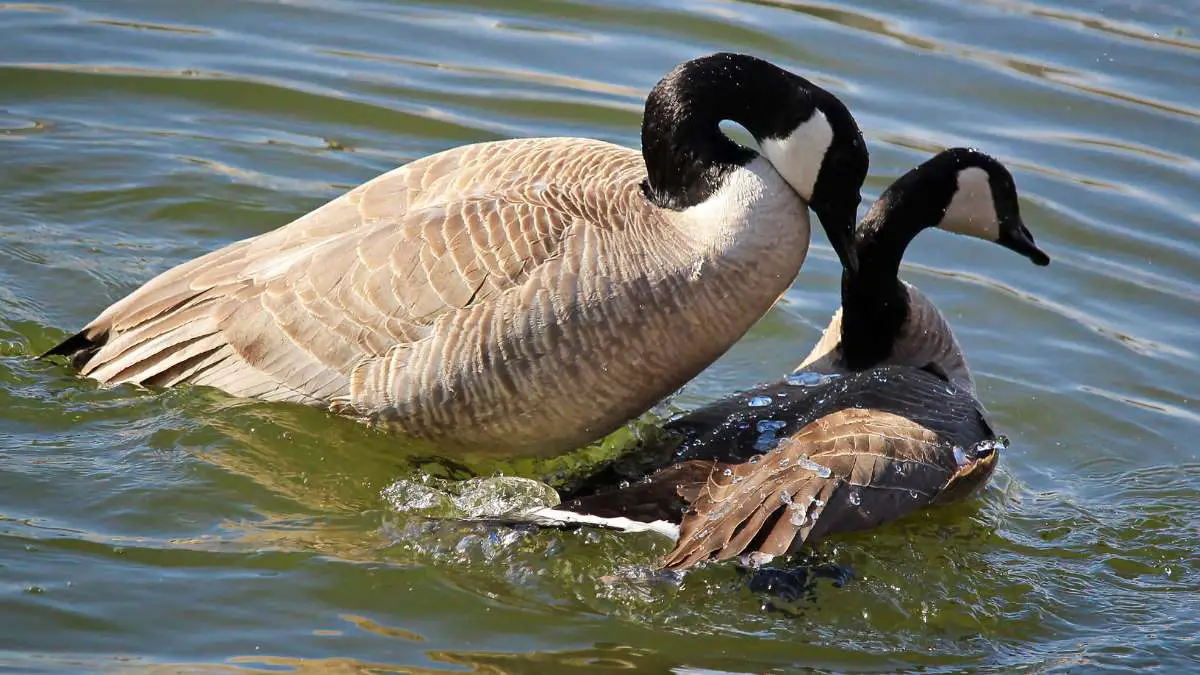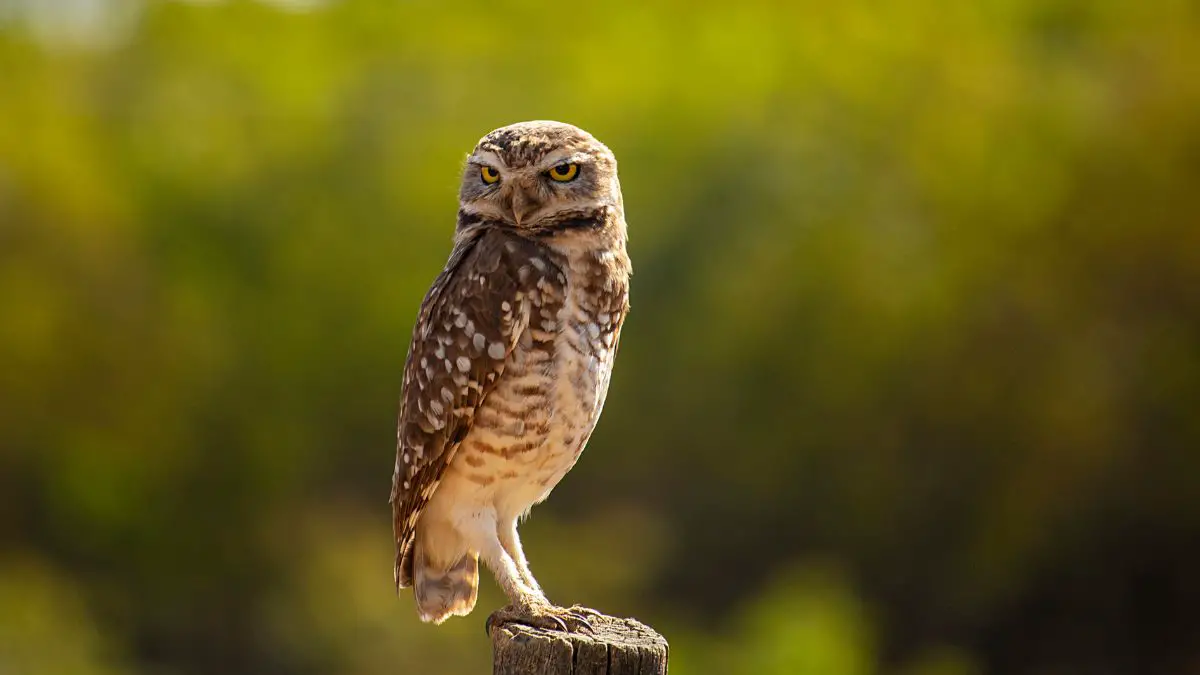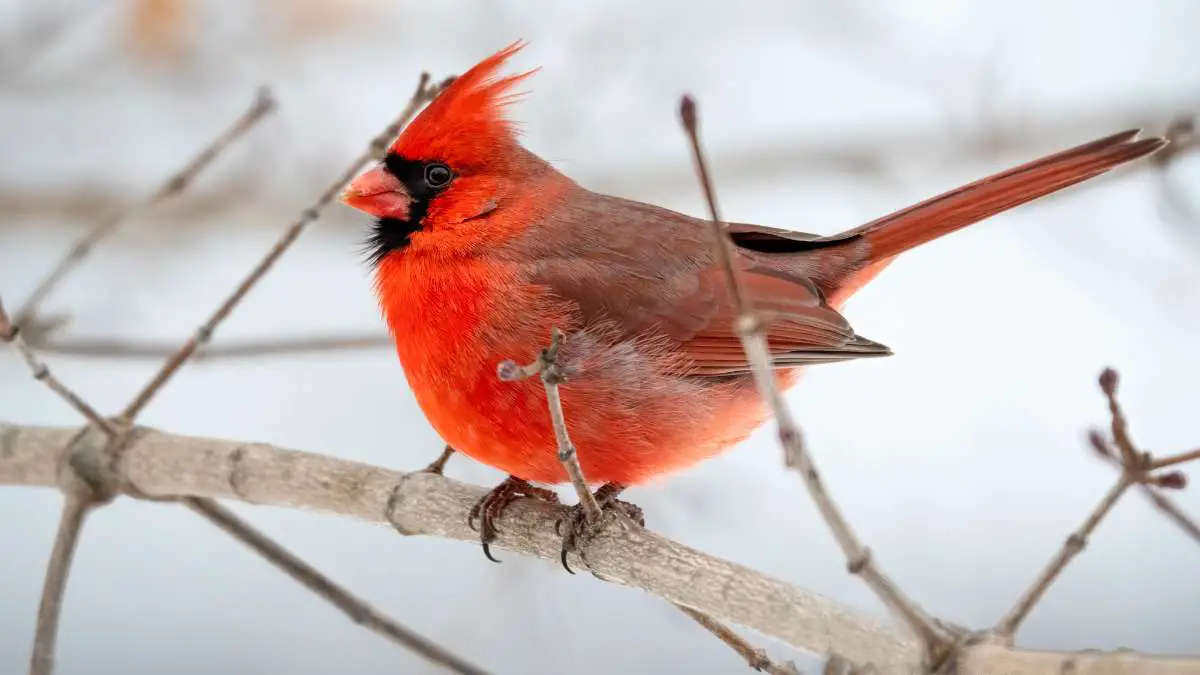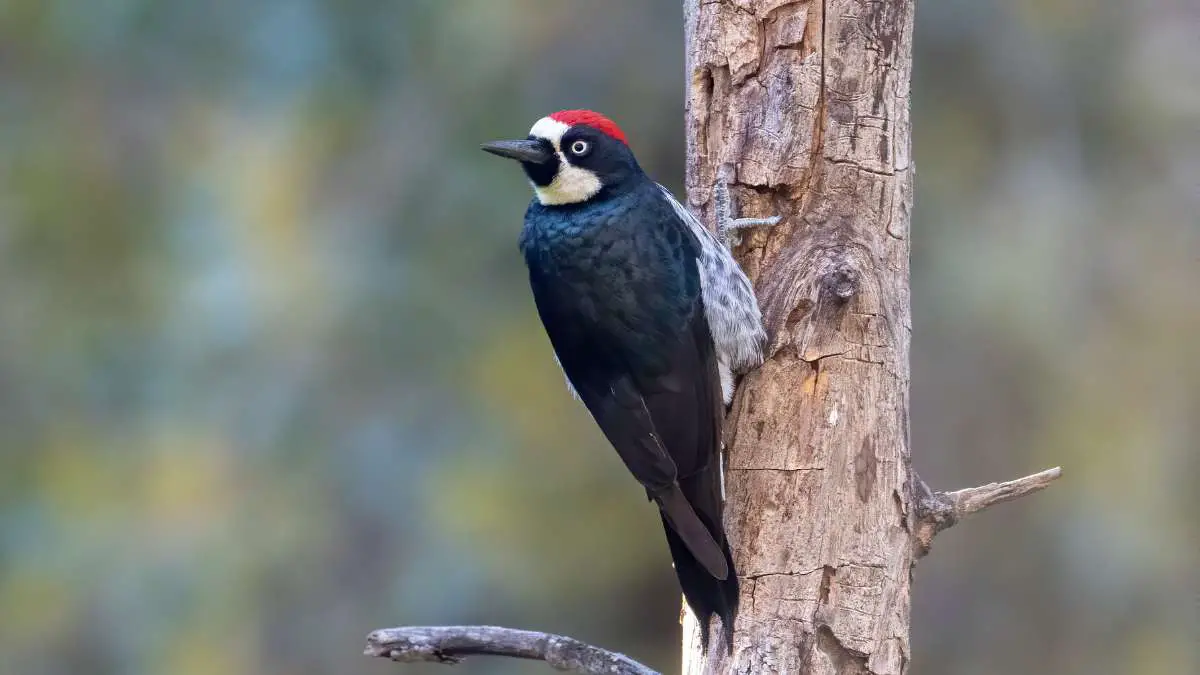Geese, those graceful waterfowl that grace our skies and ponds, have long captured our fascination with their majestic flights and distinctive honking calls.
But beyond their beauty, there’s a hidden aspect of their lives that piques our curiosity: their mating behavior.
So, let’s dive into the world of geese and discover if they truly mate for life, and why knowing this matters in our appreciation and conservation of these remarkable birds.
Geese Mating Season
Ever wondered when and why geese decide to take the plunge into the world of lifelong commitment? Well, it all starts with the geese mating season, a pivotal period in the lives of these waterfowl.
Geese, much like us, have their perfect time for love. This season usually falls in late winter or early spring, and it’s when the magic happens.
The timing of the geese mating season isn’t arbitrary; it’s carefully choreographed by nature.
As the days lengthen and temperatures begin to rise, geese become more amorous. They know it’s time to find a partner and start a family. This seasonal shift triggers a biological response that awakens their inner cupid.
But it’s not just the calendar that influences this season of love for geese. Factors like weather and food availability also play a crucial role.
Mating season coincides with the abundance of food, ensuring that geese have the energy and resources needed to raise their young.
So, when you see those V-shaped formations of geese returning in the spring or hear their characteristic honks echoing across the sky, remember that it’s not just about migration; it’s also about love, loyalty, and the beauty of the geese mating season.
Courtship Rituals
Now, let’s explore the enchanting world of courtship among geese, where romance takes flight in the most graceful manner. Geese, like us, have their own unique way of expressing affection and choosing their lifelong partners.
Their courtship rituals are a sight to behold. Geese communicate their intentions through a unique dance of body language, vocalizations, and postures. It’s like a love story written in the skies and reflected on the water.
Picture this: a pair of geese swimming together, necks gracefully entwined, forming a heartwarming display of unity.
Their synchronized movements speak volumes about their commitment to one another. But it doesn’t stop there; their honks and calls are like sweet nothings whispered in the wind.
These vocalizations aren’t just random noise; they’re their own secret language of love, allowing potential mates to find their perfect match.
As if that’s not enough, geese punctuate their courtship with picturesque postures. The classic “upright posture” is a sign of confidence and readiness for love. This gesture says, “I’m here, and I’m ready to take this journey with you.
The Monogamous Nature of Geese
One of the most endearing aspects of geese’s mating behavior is their unwavering commitment to monogamy. Just like in those timeless love stories, geese often choose a partner and stay together for life, forming an unbreakable bond.
Imagine two geese, side by side, navigating through life’s challenges together. This monogamous pairing is a testament to their loyalty and devotion.
Once they find their special someone, they tend to stick with them through thick and thin, raising families and facing the world as a united front.
But why are geese so committed to monogamy? Well, it’s not just about tradition; it serves a practical purpose too.
Monogamy in geese ensures that both parents are actively involved in raising their offspring. This collaborative effort means that their goslings receive the best care and attention, increasing their chances of survival.
Monogamy also provides emotional support. Geese form deep emotional connections with their mates, making it a source of comfort and companionship throughout their lives.
Nesting and Nest Sites
When it comes to the mating behavior of geese, it’s not just about finding the perfect partner. Creating a comfortable and secure home for their future family is just as important.
Geese put a lot of thought and effort into nesting, ensuring their offspring have the best possible start in life with protection.
So, where do geese build their nests? Typically, you can spot their nests near water bodies, like ponds, lakes, or rivers.
These locations offer safety, access to food, and a serene environment for their growing family. Geese are pretty particular about choosing the right spot, making sure it’s secluded enough to avoid disturbances but not too far from the essentials.
Now, when it comes to the actual nest-building process, it’s a team effort. Both male and female geese work together diligently.
They use various materials like twigs, grass, and down feathers to construct a cozy nest.
The male often takes the lead by providing the materials, while the female expertly arranges them into a snug, bowl-shaped nest. It’s a partnership that speaks to their dedication to creating a nurturing environment for their goslings.
The Mating Act
Now, let’s uncover the intimate details of how geese solidify their lifelong bond through the act of mating. Geese have a unique and beautiful way of expressing their commitment to each other.
The mating act among geese is a carefully orchestrated dance of love and connection.
It typically begins with courtship rituals, as we discussed earlier, involving graceful movements, honks, and vocalizations. These gestures serve as the prelude to the main event.
When the time is right, the male and female geese come together in the water. The male, known as the gander, takes a leading role, swimming close to the female and often gently grasping her neck with his beak.
This fine connection not only symbolizes their union but also ensures that they are physically close during the act.
The mating act itself is a quick and elegant affair. It often takes place in the water, with both geese bobbing up and down as they synchronize their movements.
The male positions himself behind the female and mates with her. This act serves to fertilize the eggs that the female will later lay in her carefully constructed nest.
The role of both male and female is crucial in this process, emphasizing the equal partnership they share in their lifelong commitment.
Geese, in their graceful mating act, reaffirm the strength of their bond and their shared responsibility in the journey of raising their future generations. It’s a truly remarkable display of love and cooperation in the avian world.
Reproduction and Egg Laying
When it comes to the reproduction and egg-laying phase of a goose’s life, the intricate web of nature’s plan unfolds with elegance.
Geese take their responsibilities as parents very seriously, and the process begins with the creation of their precious eggs.
The female goose, or the “goose,” plays a central role in egg production. After successful mating, she starts the process of forming the eggs.
Each egg begins as a single cell and gradually develops into a fully-formed egg, complete with a shell, yolk, and egg white. The female’s body works tirelessly to craft these little marvels of life.
Once the eggs are ready, they need a warm and protective environment to develop. This is where incubation comes into play.
The female carefully places the eggs in the nest she and her mate have constructed, and she takes on the role of incubating them. The warmth of her body ensures that the embryos inside the eggs mature properly.
Incubation is a crucial period, and it typically lasts for about a month. During this time, the female rarely leaves the nest, relying on the male to provide food and protect the nest.
It’s a true partnership, with both parents playing vital roles in safeguarding their offspring’s future.
This phase of reproduction and egg-laying showcases the dedication of geese as parents. Their collective efforts in producing and nurturing their eggs reflect the profound bond they share and their commitment to raising the next generation of geese.
It’s a beautiful chapter in the story of geese’s mating behavior.
Challenges in Mating and Reproduction
While geese are known for their strong bonds and nurturing behavior, their journey through the mating and reproduction phases is not without its challenges.
They face both natural obstacles and human disturbances that can impact their ability to successfully raise their young.
One significant challenge comes from natural predators.
Natural predators
Geese are not at the top of the food chain, and they must constantly be on the lookout for potential threats to their nests and goslings.
Predators like foxes, raccoons, and even larger birds can pose a danger to their eggs and young. Geese must remain vigilant in defending their nest against these potential threats.
Human disturbance
Human disturbances also play a role in the challenges geese face during mating and reproduction.
The places where geese choose to nest, often near water bodies or urban areas, are also popular spots for human activity.
Noise, habitat destruction, and even accidental disturbance by well-meaning humans can disrupt the nesting and incubation process.
Mitigatory actions
In response to these challenges, various conservation efforts have been put in place to protect geese during their critical mating and nesting seasons.
These efforts include the establishment of protected areas, nesting platforms, and education programs to raise awareness about the importance of giving geese their space during these times.
Migration and Mating
Migration is a remarkable part of a goose’s life, and it significantly influences their mating behavior. As these majestic birds take to the skies and embark on their seasonal journeys, they bring a unique twist to the story of love and commitment.
The impact of migration on geese’s mating behavior is profound. Geese often mate for life, but their relationships face the test of distance when it’s time to migrate.
These loyal partners must temporarily part ways as they journey to their wintering grounds.
However, their bond remains strong, and they reunite when it’s time to return to their breeding grounds. This annual reunion is a heartwarming demonstration of their unwavering commitment to one another.
Mating during migration has its own special charm. Geese often find new partners while on their wintering grounds, which adds an interesting layer to their mating dynamics.
These winter flings might not always result in lifelong commitments, but they showcase the adaptability and social nature of geese.
Fun Facts and Observations
Now that we’ve delved into the enchanting world of geese’s mating behavior, let’s wrap up our journey with some interesting fun facts and personal observations.
Did you know that geese are not only monogamous but often show strong site fidelity too? This means they tend to return to the same breeding grounds year after year, reinforcing their commitment to their chosen nesting areas.
One amusing observation is that geese often engage in “celebration flights” after successfully mating.
These joyful aerial displays involve synchronized flying and loud honking, as if they’re shouting to the world, “We did it!” These displays of exuberance are a sight to behold.
And if you’ve ever wondered about the different sounds geese make, their vocabulary is surprisingly expressive. From the classic “honk” to softer murmurs, their vocalizations play a significant role in courtship and communication.
On a more personal note, many people have their own heartwarming stories of encountering geese in the wild.
Whether it’s watching a loving pair paddle across a serene pond or witnessing their fluffy goslings taking their first wobbly steps, these moments remind us of the beauty of nature and the enduring love of these remarkable birds.
Conclusion
In the world of geese, love and loyalty soar high. They mate for life, demonstrating a deep commitment that extends beyond borders and seasons.
Their complex courtship rituals, the partnership in nest-building, and the tender incubation process reflect the beauty of their bond.
Understanding the mating behavior of geese not only offers a glimpse into their world but also highlights the importance of conserving their habitats.
By protecting these remarkable birds during their nesting and mating seasons, we ensure their enduring love stories continue to grace our skies.
As birdwatchers and nature enthusiasts, we have the privilege of witnessing the timeless romance of geese, a reminder that in the animal kingdom, as in our own lives, love knows no bounds.




